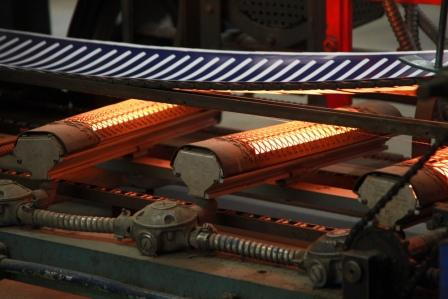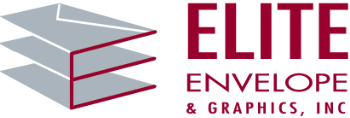
Ok, so your customer or in-house client wants to do a mailing with a custom envelope: Good for them!
Studies show direct mail advertising to be a very effective way to get your message across. And a colorful and well-designed envelope can help the effectiveness of the message and create interest to open it and find out more.
Your client presents you with an envelope design and now it’s your job to decide how best to get it done. One of the first decisions is how to print and make the envelope. Here are a few things to keep in mind in order to make the right call.
The three most important factors are the size of the envelope, the size and placement of the window and the amount of print coverage required.
If the envelope is not a standard size, it will most likely have to be custom-made. If it has a window that is not standard (1-1/8” x 4 ½ ”, 7/8” from the left and ½” from the bottom), the same thing applies. Regardless of whether the envelope even has printing on it, these two factors will have to be taken into account. Obviously an off-the-shelf item in a standard size that can be jet-printed (typically the way envelope companies print envelopes – see other blog posts for more information) is going to be the least expensive way to go.
However, the most important factor in determining whether an envelope must be converted or not is the amount of printing coverage. The term “converting” is really just another way to say “manufacturing”. However, they are generally not used interchangeably. “Converting” most commonly describes the process by which sheets are printed and then cut and folded to make envelopes. It can also describe the cutting and folding of flat sheets of paper with no printing but for our purposes, we will stick with the most common use of the term.
Jet presses have their limitations and that mostly has to do with the amount of print coverage. If your design has either of the following printing characteristics, the envelope will most likely have to be printed on flat sheets and converted into envelopes after the fact:
- Full coverage front and back
- Heavy coverage and solids on either side of the envelopes including the flap that bleed to the edge
Anything less than that and it will be a judgment call. Some jet presses (like those at Elite Envelope) can print solids and bleeds to the edge with good results. Some of it has to do with the skill of the pressman (ours are the best!). If you’re unsure, the best way to proceed is to send a pdf of the copy to your envelope company and a trained eye will be able to give you the printing options. It’s always best to deal directly with an actual envelope converter when you are trying to determine the best way to go. They would have the most expertise on both the printing and converting side.
Good luck and may you be happy and enthusiastic like all recent converts! Feel free to comment or pose a question and I'll be sure to get back to you.
